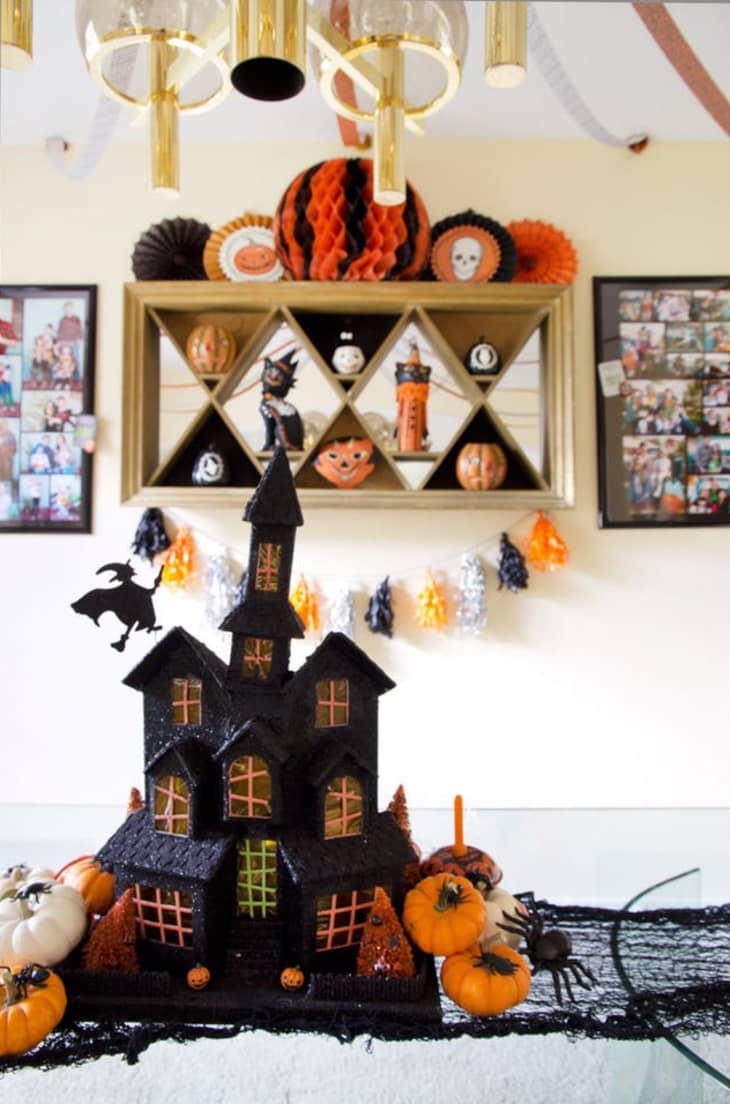Halloween Decorating Hasn’t Been Around As Long As You Think

You’ve probably noticed that Halloween decorations have seen a definite uptick in recent years. When I was a kid, the decorations in our neighborhood were limited to jack-o-lanterns on front porches, and maybe the occasional skeleton or creepy spider web. Now, it’s not unusual to see entire neighborhoods decked out in black, with witches, faux graveyards, and even Halloween lights. How did we get here? Let’s take a look back at the interesting history of decorating for Halloween.
The roots of Halloween itself can be traced back thousands of years, to the Celtic festival of Samhain, which was celebrated at the end of the harvest. During this time, the Celts believed, the spirits of the recently deceased could return to menace the living. Celebrants would light bonfires and dress in frightening costumes in an attempt to confuse the spirits and ward them off. When Christianity was introduced to Great Britain, many of the traditions of Samhain were incorporated into the Catholic holiday of All Saints’ Day (or All Hallows’ Day) and its accompaniment, All Hallows’ Eve, or Halloween.
Halloween made its way to the United States in the mid 1800s, when waves of Scottish and Irish immigrants came to the New World and brought their cultural traditions with them. By the early 1900s, Halloween had gained national popularity, but it still wasn’t the same kid-friendly holiday we know today. Before the rise of trick-or-treating, Halloween was mostly a holiday for adults—a good excuse to throw a party and also, to decorate. From 1912 to 1934, the Dennison Paper Company published a yearly guide called Dennison’s Bogie Book. A hybrid idea book and catalog, it was full of suggestions for throwing the perfect Halloween party, all with Dennison products, of course.
This setup, described in their 1920 edition, certainly sounds spooky:
When your guests arrive the door should swing open apparently unaided and the hall should be entirely dark, except for a few very faint green lights that may be followed to the dressing room.
Mysteriously opening doors aside, most of the decorations described in the Dennison’s book were intended to be disposable. Made of crepe paper and paper cutouts, they would be thrown away after the party was over. For this reason vintage halloween decorations, like the ones made by Dennison and the Beistle Company, are very rare and can fetch a lot of money. It wasn’t until quite recently that people began to think of Halloween decorations the same way they do Christmas decorations, as something to be stored and brought out again year after year.
Trick-or-treating, the tradition we associate most closely with Halloween, didn’t get started in the United States until the ’20s and ’30s. It dropped off during World War II, when sugar was rationed, and came back in a big way at the war’s end, becoming nearly ubiquitous by the ’50s. The rise of trick-or-treating coincided with a move towards more kid-friendly halloween decorations: less creepy and more cutesy. In 1958, Mamie Eisenhower decorated the White House for Halloween for the first time, giving Halloween decorations a sort of national seal of approval.
Today, Halloween is bigger than ever. In 2005, American consumers planned to spend $3.3 billion on Halloween-related items. Only 11 years later, that number had nearly tripled, to 9.1 billion. Decorations are more elaborate and extensive, and disposable decorations like paperboard skeletons have been replaced with more permanent options, like plastic skeletons, orange lights, and even Halloween inflatables.
I would be remiss to not mention the oldest of all Halloween decorations: the jack-o-lantern. No one can quite agree on why they’re called Jack, but we do know that during Samhain, the Celts would carve menacing faces into turnips and carry them around to ward off evil spirits. (A quick Google search will reveal that turnip lanterns are, in fact, very creepy.) The carved lanterns were retained as part of Halloween, and when Halloween made its way to the States celebrants realized that there was a New World vegetable even better suited for carving creepy faces: the pumpkin.
The familiar Halloween pumpkins, the ones sold by the millions at grocery stores and pumpkin patches, are Howden pumpkins, a variety not developed until the 1960s. Farmer John Howden bred his namesake pumpkin for its shallow ribs, relatively thin flesh, and handle-like stem, all things that make it ideal for carving. Which just goes to prove that many of the things we think of as essential to Halloween haven’t been around for very long at all. Whether it’s better, more carveable pumpkins or giant inflatable jack-o-lanterns that don’t require carving at all, Halloween decorations are always evolving, much like the holiday itself.